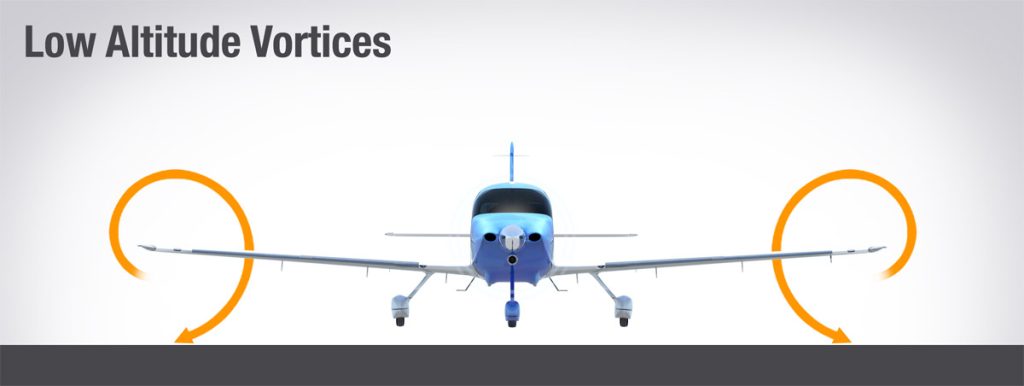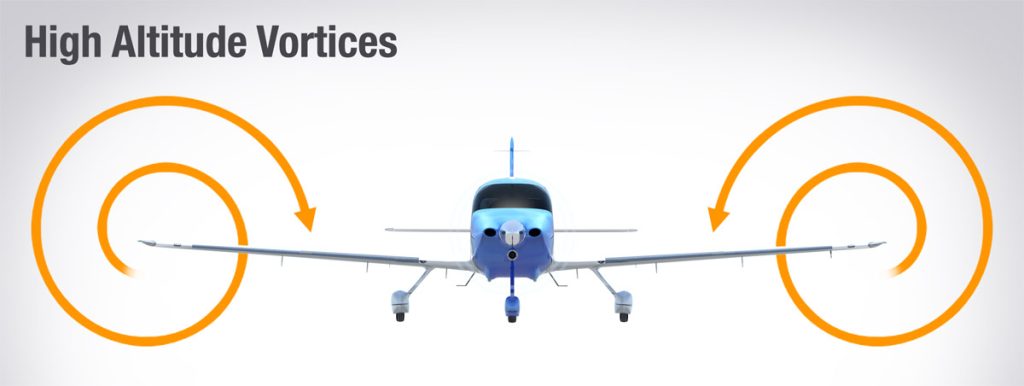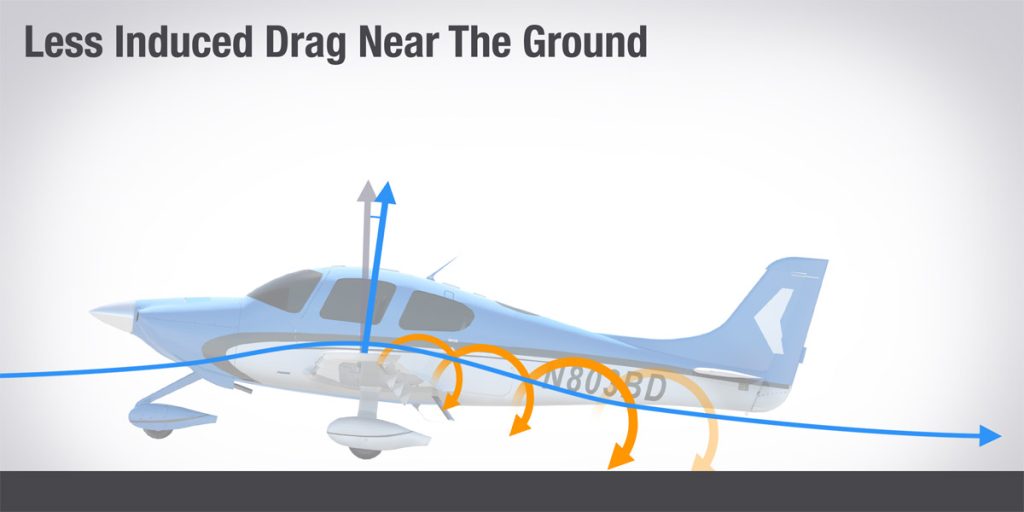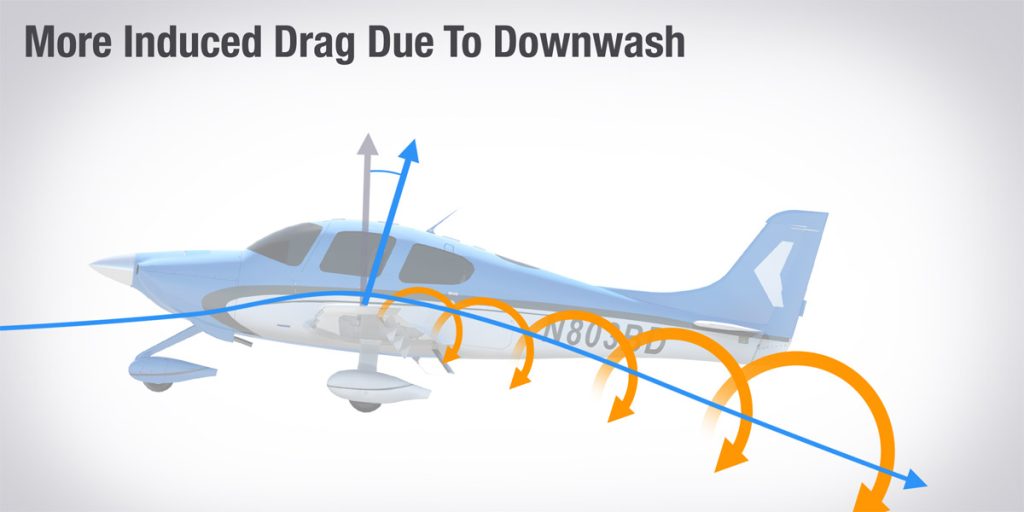Original publication date: August 26, 2022
Last Updated: 8 months
Author: Max Skyler
Topic: Airplanes
Number of Comments: 0
The debate over whether it is better to fly high-wing or low-wing aircraft is as old as the age of aviation itself. Both aircraft configurations have their own unique pros and their cons, and present different challenges to aviators, both while in the sky, as well as when on the ground. While it may be overly simplistic and incredulous to say that it is a “matter of preference”, the fact of the matter is that the differences are substantive enough to shape and mold your experience as a pilot.
The primary characteristic that differentiates the two is the tradeoff in terms of visibility out the window. Despite the fact that high-wing and low-wing aircraft both rely on the same aerodynamic fundamentals to generate lift, the placement of the wings also impacts other operational modalities.
If you need help deciding whether high-wing or low-wing aircraft are right for you, then let’s explore some of the differences between the two and the impact they would have on your aviation journey.
What is the advantage of high wing aircraft?
Make no mistake: No matter where the wings are placed, high or low, an entire hemisphere of the sky will be obstructed from view.
When flying in a high-wing aircraft, you will laud the fact that you have a much better view of the ground. This is ideal for sightseeing, for ground reference maneuvers, for navigating via pilotage and dead reckoning. During VFR flight, it can be a huge boon, as you have full views of the earth beneath you. While flying in the traffic pattern, you are less likely to lose sight of the runway, and you will be able to keep tabs on other aircraft flying at or below your altitude.
Flying a high-wing aircraft can be problematic when climbing or performing turns. Your view of the sky above you is obstructed by the wings. During turns, you must maintain proper situational awareness of what was in the sky before you initiated your turn. Once you bank your airplane, you won’t be able to see what is happening in the direction of the turn until you roll out of it. Similarly, when climbing, you would need to ensure that you had an idea of what was in the sky prior to beginning your ascent, since you won’t be able to look up to the sides during that phase of flight.
What is the advantage of low-wing aircraft?
When flying a low-wing aircraft, the visual challenges are inversed: Your view of the ground outside your side views is blocked by the wing. However, you have a clear, unobstructed view of the entire sky at or above your altitude. Visual reference of the ground is not as much of a problem during turns in a low-wing. With the airplane banked, you are able to see more of the ground, although your view of the sky will then be obstructed by the opposite wing. Visibility during climbs is not an issue. Visibility during descents requires you to be vigilant of any air traffic or obstacles that may be below the aircraft.
While low wings do not necessarily block the entire field of view of the earth below, they do “get in the way” when trying to do any sightseeing or when you are trying to fly by visual reference to landmarks on the ground. You may find that you have to bank and yaw the aircraft more often, in order to see nearby landmarks on the ground, especially when flying in the traffic pattern.
During emergency landings, it can be more challenging to look for nearby landing spots in a low-wing, since you would have to bank and turn the aircraft just to be able to see what is immediately below you, which is not a problem with high-wings.
Are high-wing aircraft safer?
The safety of high-wing versus low-wing aircraft can be compared in the context of a number of situations, as they pertain to collision avoidance. How does the positioning of the wings help to prevent collisions? And how does the positioning of the wings help to bear the brunt of the impact in the event of an emergency landing?
When it comes to seeing and avoiding other aircraft in flight, the wings are a blindspot, no matter where the wings are placed. While high-wing aircraft give you the advantage of being able to see what is below you better, low-wing aircraft give you the advantage of being able to see what is above you.
When you are in the traffic pattern at an airport, your goal is obviously to descend. Therefore, you want to be able to see what’s below you as you pass through each altitude. So it could be argued that high-wing aircraft have that advantage. But during turns in the pattern, the entire field of vision on the inward side of the turn becomes one big blindspot.
During the landing flare, low-wing aircraft may have a tendency to balloon more easily. Due to the wings being closer to the ground, the impact of ground effect may be more pronounced. Recovery from ballooning requires greater attention from the pilot to guide the aircraft back down to land the runway.
In the event of an emergency landing, low-wing aircraft can provide an extra “cushion” of safety for the passengers, as the wings are available to bear a greater brunt of the impact. Conversely, in a high-wing aircraft, the fuselage would make direct contact with the ground, in the event of an unstable emergency landing.
There is a lot to consider when researching which airplanes are the easiest and safest to fly.
Why is a high-wing more stable than a low-wing?
All aircraft are obviously designed with stability in mind. Doing so otherwise would no doubt render an airplane unsuitable for manned flight and would not be deemed airworthy!
Having said that, high-wing aircraft have a slight edge over low-wing aircraft, when it comes to the question of stability. This is due to the fact that the center of gravity of a high-wing aircraft is situated below the center of lift.
So if high-wing aircraft are inherently more stable than their low-wing counterparts, then why aren’t all aircraft high-wing? The simple solution to this is in the wing design.
Low-wing aircraft will compensate for the stability of the aircraft by employing a more pronounced wing dihedral than aircraft with high-wings. (To learn more about wing dihedrals and their impact on aircraft performance, check out this excellent resource on low-wing vs high-wing dihedral published by AOPA.)
Does high-wing produce more lift?
The placement of the wings relative to the fuselage of the aircraft generally has no bearing on their ability to produce lift. Lift is generated by the horizontal movement of air over the wings. This movement of air is the same, regardless of whether you are in a high-wing or in a low-wing aircraft. By design, the fuselage itself plays no role in the generation of lift. It is entirely a function of the wings. The placement of the wings will impact things like the center of gravity and general aerodynamic performance. But the placement of the wings itself does not have any bearing on their ability to generate more lift. On the other hand, what does matter are the size and shape of the wings.
How does the placement of wings impact ground effect?
One situation in which the positioning of the wings does come into play, is when you are in ground effect.
Ground effect refers to the impact that airborne flight, in close proximity to the ground, has on aircraft performance.
Ground effect becomes a factor typically during the two most critical phases of flight: Immediately upon take off and during the landline flare. It can also be a consideration if you are conducting flight operations immediately above the ground, such as would be the case of a crop-duster.
When air flows over the wings in order to generate lift, the resultant airflow emerges in the form of large spiral-shaped wingtip vortices, which cause induced drag. At altitude, this is not a problem.
However, when an aircraft is close to the ground (typically within less than one wingspan’s length), the production of wingtip vortices is disrupted. This means there will be less induced drag, and consequently increased lift.
As a result, the airplane will have a tendency to stay airborne longer, and even float or balloon above the runway. This can cause challenges during the landing flare. This phenomenon is what is known as ground effect.
Ground effect is undesirable during the landing flare, and is something that all pilots must learn to contend with.
When it comes to ground effect, high-wing aircraft have the advantage. Because the wings are higher above the ground, there is less of a pronounced disruption to the generation of wingtip vortices, and thus there is less of a tendency for them to float.
Low-wing aircraft, on the other hand, will generally experience more pronounced effects of ground effect, since their wings are closer to the ground, and the disruption to the generation of wing-tip vortices is greater. This means that low-wing aircraft are more prone to floating or ballooning during the landing flare.
Whether you fly a high-wing or a low-wing aircraft, you will inevitably have to mitigate the risks of potential ground effect. Low-wing pilots simply have to be more vigilant.




How does wing placement affect fuel management?
In both high-wing and low-wing aircraft, the fuel tanks are located in both of the wings.
One of the responsibilities of the pilot in a low-wing aircraft is to select which fuel tank the fuel is being drawn from, and periodically switch fuel tanks during flight, to ensure that there is equal weight distribution (as failure to do so could result in an unstable center of gravity, which can create control issues for the airplane).
However, in a high-wing aircraft, this is less of an issue, because gravity pulls the fuel down from both fuel tanks equally and simultaneously. Also, due to the assistance of gravity, high-wing aircraft are less dependent on the need for fuel pumps, as compared to their low-wing counterparts.
One disadvantage that high-wing aircraft have, is that it is more challenging to refuel them, as it involves climbing up, presumably onto a ladder, in order to place the fuel hose into the tank… whereas with a low-wing, the fuel tanks are more easily accessible.
How does wing placement affect ground clearance?
Anyone who has ever taxied an aircraft at an airport can attest to the fact that ground obstacle clearance at airports is less of a problem in high-wing aircraft than in low-wing aircraft.
Having said that, obstacle clearance is something we can generally take for granted at airports. Those orange cones, taxiway and runway signs are all designed, in accordance with guidelines and standards mandated by the FAA, to be well below the height of any typical low-wing aircraft.
But it goes without saying that pilots of high-wing aircraft have a clear advantage in this particular scenario, when it comes to the issue of ground obstacle clearance when taxiing at an aircraft. It is much easier to see and avoid any obstacles on the ground in a high-wing. But it is not something that a low-wing pilot cannot effectively manage, with proper vigilance, just as well.
Why are bush planes high-wing?
The term “bush plane” refers to a classification of general aviation aircraft that is used to fly in and out of remote, undeveloped areas, and oftentimes unpaved, inhospitable, makeshift runway environments.
Bush planes are typically high-wing, for a number of reasons:
- High wings make it easier to load and unload cargo.
- They provide better, unobstructed visibility of the terrain during flight.
- They provide better clearance against any obstacles or any debris or dirt that may be kicked up into the airframe by the propwash when maneuvering on unpaved runway surfaces.
Bush planes are not only high-wing, but they are almost always also taildraggers. The high, nose-up attitude of the propeller helps to provide better clearance against debris and obstacles during taxi, takeoff, and landing in inhospitable runway environments.
Are high-wing planes easier for embarking and disembarking?
One of the greatest pet-peeves of low-wing aircraft, such as the Piper Warrior, is the manner in which they were designed for pilots and passengers to embark and disembark from them: They only have one door, and that too, you must climb up onto the wing, for egress and regress! The door is typically on the passenger side (the right seat), and so it becomes the pilot’s responsibility to ensure that the single door remains properly shut.
It almost seems disingenuous, considering the fact that high-wing aircraft, such as the Cessna 172, have proper doors on either side of the aircraft, that you can step into and out of, just like a two-door automobile.
High-wing aircraft clearly have the advantage when it comes to the ease of ingress and egress from an airplane, not only for passenger loading but also for loading and unloading baggage.
Do clearing turns differ between high vs low-wing planes?
The purpose of a clearing turn is to ensure that there are no other aircraft in the general vicinity that might pose as collision hazards, when attempting to perform practice maneuvers such as stalls, steep turns, or turns-about-a-point.
The fundamental concept is the same: perform two 180-degree turns to visually sweep the sky to check for any oncoming or transient traffic that might interfere with your upcoming maneuver.
However, when initiating a clearing turn in a high-wing aircraft, it is a good idea to briefly raise the wing that will be on the inside of the clearing turn that you are about to make. Otherwise, once you enter the turn, you will not be able to see any aircraft at or above your present position.
When initiating a clearing turn in a low-wing aircraft, use your judgment to establish a bank angle (or possibly even vary the bank angle) that allows you to maintain an adequate field of vision below the aircraft.
Are low-wing aircraft easier to maintain?
When it comes to maintenance of a low-wing versus a high-wing aircraft, both have their advantages and disadvantages.
Refueling a high-wing requires you to step up onto a ladder in order to get above the wing and insert the nozzle to refuel it. A low-wing aircraft is easier to refuel, because the fuel tanks are typically at the level of the average person’s torso.
Activities like testing the fuel with a fuel-strainer are easier in a high-wing, since you need only to walk underneath the wing to perform the test.
The preflight inspection of the wings on a high-wing aircraft is also easier in some respects, as you can simply walk underneath the wings and look up at the bolts and nuts that hold the ailerons and flaps to the wing. You can just as easily verify the operation of the anti-collision strobe lights just as well.
In fact, in a Cessna it is easier to get in and out of the aircraft to turn on and off the lights, to be able to visually inspect them… whereas in a low-wing, such as any Piper aircraft, it involves climbing onto the wing and getting into the cockpit to turn on and off the lights, during the preflight inspection of the lights.
On the other hand, if you need to do any type of “above-the-wing” inspection, it would require you to get up onto a ladder.
Apart from that, inspection of the fuselage and the engine are essentially no different between high-wing versus low-wing aircraft.
Are low-wing planes faster?
When we talk about which type of airplane is “faster”, the concept of aircraft speed is typically measured in terms of “airspeed”, or the speed at which the aircraft is able to move through the air. There is also another metric that is often used, which is “ground speed”, which is the speed at which an aircraft is able to move from point A to point B, relative to fixed points on the ground.
The speed of an aircraft is the sum total of multiple variables:
- How heavy is the aircraft in terms of the weight of the passengers, cargo, and fuel.
- The speed and direction of the relative wind outside the aircraft.
- The temperature and relative humidity of the ambient air.
- The altitude at which the aircraft is flying.
- The performance of the engine, the shape and configuration of the wings
- The general surface area of the aircraft.
Hypothetically speaking, if all variables were exactly the same, and we were simply comparing two identical aircraft, with the only difference being that one is a high-wing and one is a low-wing, then theoretically it could be argued that a low-wing aircraft is able to produce more lift and is less affected by drag.
So in a hypothetical neck-and-neck comparison, it could be argued that low-wing aircraft have the advantage and are generally faster than their high-wing counterparts.
However, you are unlikely to find a situation where either one type of aircraft or the other is universally and absolutely able to gain a significant enough advantage in airspeed, such that you could definitively say one is faster than the other at all times, under all circumstances.
The reality is that both Cessnas and Pipers are comparable in terms of their flight characteristics, and the sum total of environmental and physical factors that contribute to an aircraft’s overall performance lends them both to be roughly equivalent.
Why are commercial jets low-wing?
With all the debate about the advantages and disadvantages of high-wing versus long-wing aircraft, it then begs the question: Why are commercial jets low-wing?
Does this imply that if low-wings are the configuration of choice for commercial jets, that low-wing must then necessarily be superior?
The answer lies not so much in aerodynamics as it does with respect to utility:
- Low-wing aircraft are easier to service in between flights. Refueling is easier when the wings are lower.
- It is a more efficient design for retractable landing gear to be folded up into the wings of a low-wing aircraft. In high-wing aircraft, the landing gear must be retracted into the body of the plane.
- In a low-wing aircraft, the wings will bear the brunt of the impact in the case of an emergency landing, providing better safety for passengers.
- By placing the wings under the cabin, the wing assembly will be less intrusive and will be out of the way. If the wing assembly were above the cabin, then it might take up some of the available cabin space.
Is a high-wing or low-wing plane better for student pilots?
For first-time pilots, the decision of whether to choose to train in a high-wing or in a low-wing aircraft is not always a choice: It depends entirely on the fleet of trainer aircraft available at your nearby flight-schools. Some flight schools might have a fleet comprised exclusively of high-wing or exclusively of low-wing aircraft. In this case, you don’t really have much of a choice.
On the other hand, what if you do have a choice? Which one is better for novice, first-time student pilots? Does one provide any advantage over the other in terms of developing your proficiency as a pilot?
As mentioned earlier, the “convenience factor” can play a major role in favoring one type of aircraft over the other:
The most glaringly obvious difference between a high-wing versus a low-wing are the doors. Cessnas have doors on either side of the aircraft. Just like a car, both the student pilot and the instructor would have their own separate doors to get in and out of the airplane.
In a Piper aircraft, there would only be one door on the passenger side. So the student would always have to climb into the aircraft first, scoot over to the far left seat, before the instructor can climb in. While this is not necessarily a deal-breaker, it becomes a matter of comfort and convenience.
Secondly are the views. It is easier to learn how to fly by reference to landmarks on the ground in a high-wing, since the views are not obstructed as much.
Thirdly, is the ease of access to the wings for refueling in a low-wing versus a high-wing.
But what about the “flyability” of the aircraft, or the ease of learning how to fly, for student pilots?
When it comes to the “flyability” question, both high-wing and low-wing aircraft are fundamentally identical in terms of flight dynamics. There may be certain nuances, such as stability during certain maneuvers, but these are negligible and do not present any type of advantage or disadvantage to pilots one way or the other. The reason for this is because pilots must learn how to maintain positive control of their aircraft at all times. The fundamental physics of flight act upon both high-wing and low-wing aircraft equivalently. Therefore, it can be said that there is no one clear winner, one way or the other.
It fundamentally boils down to a matter of preference or a matter of aircraft availability.
Which are more affordable: high-wings or low-wings?
Affordability can be compared both in terms of purchase price and total cost of ownership. Both can also be compared even in terms of rental rates per hour.
Let’s take a look at two of the most popular, major industry leaders in the general aviation industry: Cessna and Piper.
The base price of a brand-new single-engine Piper Archer LX is about $420,000.
The base price of a brand-new single-engine Cessna 172 is about $430,000.
Of course, you can buy older, used models of both of these for a mere fraction of the cost of new ones… in many cases, for under $100,000.
As for operating costs, these fall into two general categories: fixed costs and variable costs.
Fixed costs are a set amount per month or per year that you must pay, regardless of whether you fly your airplane or not, and how often you fly it. The monthly payment for your airplane (if you took out a loan for it), the hangar or tie-down fees, and the costs for aircraft insurance, are all examples of fixed costs.
Variable costs fluctuate, depending on how often you fly your airplane. General wear and tear, preventative maintenance, the cost of fuel, and repairs are examples of variable costs.
Unfortunately, there is no one-size-fits-all answer to the question as to which one is more affordable as opposed to which one is costlier to maintain.




